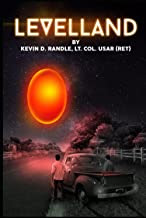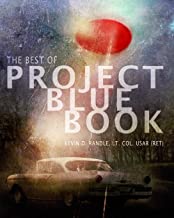I
have been chasing footnotes again as I work on my new book. This time the
trouble wasn’t as outrageous as it has been in the past.
I
was researching the series of sightings at Fort Monmouth, New Jersey. These
were radar and visual sightings that took place on September 10 and 11, 1951.
It all began when a student radar operator tracked an object at a speed faster
than fighters at the time. Not much later, the pilot of a jet trainer saw an
object that he believed to be a flying saucer. Other radars were involved,
though one of those sightings on the tenth was clearly a balloon. The next day
there were some additional sightings. For our purposes here, the details of the
sightings aren’t all that important. It is the footnote.
As
I always do, I check the skeptical side of the argument to see if there is a
plausible answer. The skeptics are not always wrong. In Curtis Peebles Watch the Skies, I found an explanation
for the sightings and he referenced Ed Ruppelt, one time chief of Project Blue
Book and the author of The Report on
Unidentified Flying Objects published in1956, as the source. Peebles, I
have noticed, wrote as if there are no UFOs, meaning alien craft, and tended to
ignore the situation if the explanation was shaky… sort of the opposite of the
true believers who write as if nothing anomalous has an explanation.
Given
how Peebles had footnoted his entry, I checked my copy of Ruppelt’s book.
Peebles had been discussing how the transition from Project Grudge to Project
Blue Book had been handled, the involvement Major General Cabell and his
outrage when he learned that nothing was actually being done to investigation
the sightings at Fort Monmouth and the appointment of Ruppelt to take over the
project.
The
pages Peebles cited, while talking about all that, and mentioning Fort
Monmouth, didn’t offer the explanation for the sighting he cited. That was nowhere
to be found there. But I remembered that Ruppelt had seemed to dwell on the
Fort Monmouth sightings more than what was in the sections noted by Peebles, so
I flipped through the rest of the book until I found Ruppelt’s explanation for
the sightings, which matched what Peebles had written. So, he wasn’t wrong in
suggesting the sightings were solved and citing Ruppelt as the source. He
simple didn’t get the page numbers right (providing, of course, that the
edition I used was the one he used. It’s difficult to say for certain because all
of them have the same copyright date to add to the confusion).
The
other thing that I did and I’m not sure that Peebles did, was search the Blue
Book file on the Monmouth case. It is clear from some of the documentation that
part of the purpose of their investigation was to mock those who had reported
the UFO. It came in a climate in which the Air Force wasn’t taking UFO
sightings seriously, which explains why no one had bothered to investigate
until Cabell, or one of his aides, had a meltdown about the lack of
investigation. If nothing else, they should have been concerned about something
unidentified flying along the coastal defense zones of the United States. Such
an attitude might have overlooked something more dangerous than a radar image
traveling at high speed.
There
is one other aspect to this. Ed Ruppelt’s papers were purchased long after his
death. In those papers is a report of a wire recording made by Jerry Cummings,
who, at one point in early 1950, was the ranking officer for the UFO investigation.
Apparently the Fort Monmouth case isn’t quite as cut and dried as Ruppelt, and
later Peebles, made it seem. And to add to the confusion, in Grudge Special
Report No. 1, dated December 28, 1951, the T-33 sighting made by Lieutenant
Wilbert S. Rogers was listed as “probably a balloon.” Later, in line with the
Project Blue Book policy, the “probably” was dropped and it became a balloon
though Rogers denied that he had been fooled by a balloon.
The
real point here is that in chasing the footnotes, I discovered a minor error in
Peebles’ book that is easily correctable. All he needed was to add an
additional page number. He did, however, point to Ruppelt’s book as his source and
with that I was able to verify that he had quoted the material correctly. That it
partially disagrees with the Blue Book information that is buried under a pile
of rhetoric, changing investigative policy and a desire to eliminate all the
unidentified cases is really a minor point. It’s just that sometimes you have
to look beyond the answer you want to hear to the one that complicates
everything ever more.





















8 comments:
Peebles.
Bood was sitting right on my desk as I wrote the entry...
Book.
Time for a holiday maybe Dr Randle
Best wishes for the festive season
Nitram
The Fort Monmouth incident was very important in that it led directly to the second period of relatively objective UFO research by the Air Force. The question is what was with Gen. Cabel? As chief of Air Force intelligence was he not cleared for the "Roswell Truth" or was there some other motivation for him reversing the "Grudge Policy" that Vandenberg (?) set after the estimate of the situation. By the next year someone in the Air Force was leaking the theory that the saucer just might be interplanetary. This is one of the puzzling aspect of the Arnold to Robertson Panel period to me.
One infuriating thing about Ruppelt's book is the lack of an index! This, plus the fact that his 1959 revisions (3 chapters added) are not even mentioned in the foreword of the second edition, or on the flyleaf. It is as if the author and publishers were very negligent. Someone, maybe an indexer, should certainly have provided one for what was probably the best and most authoritative UFO book of that decade.
However, I concede that this is not really part of your topic.
Ruppelt is an interesting case. The original addition give a completely different attitude on the UFO phenomena than the later final chapters which primarily focus on contactee cranks and a I believe what Blue Book was putting out after I left. It should have been obvious to him that what Blue Book was doing was the same thing Grudge had been doing before him.
Also, he was slated to appear on a TV presentation to support Major Kehoe and pulled out perhaps under Air Force pressure. The new chapters to his book were then added which basically changed his position to strongly anti-UFO. Given that he was working for a company primarily relied on Air Force contracts, it isn’t much of a stretch to infer that he buckled under pressure.
The question is why the pressure? Why the cover up if there is nothing to UFOs? To me the government behavior with respect to UFOs is the most convincing thing to indicate that they are real.
I agree with that statement! Does thou’st Protest too much?🇺🇸
Post a Comment